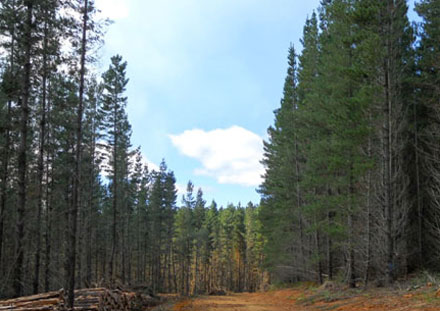In November 2021 former Australian Forest Products Association CEO Ross Hampton wrote that what was then the latest five yearly review by ABARES of Australia’s national plantation estate was more than sobering reading.
It was, Mr Hampton said, like the script of a horror film.
“The bureaucratic speak in the report, notes unemotionally that Australia’s softwood plantation estate (the pine trees that we use to make our timber house frames) remains ‘stable’,” he wrote.
“‘Stable’, in this context, means stagnant, as it has been for more than a decade, which means it is failing to keep up with current and future housing demand. This line should be writ-ten in bold with lots of exclamation marks,” he wrote.
It’s worth re-looking in some detail some of what he said back then.
“This is a troubling scenario in a nation which is already well below water when it comes to supplying its own timber needs,” Mr Hampton wrote.
“However, the truly scary page in the report is the one showing ABARES’s forecast that ‘softwood log availability’ and by extension housing timber will decline by 12% over the next four years, and the pine plantation estate will remain stagnant for the next 40 years.
“Meanwhile, our population is growing quickly – some estimates say 35 million by 2035.
“And yet how do we square this picture with the fact that there is massive demand for timber products? Our plantation estate provides the affordable timber for our homes. If you are building or renovating, you will know that timber and timber products are in huge demand. AFPA and Master Builders Australia recently calculated we will be 250,000 new house frames short by 2035. Just what do we think our children are going to do?”
And as Mr Hampton pointed out the national plantation estate continues to go backwards.
“Each year a little more land moves out of tree crops into other types of farming,” he wrote.
“Our national political leaders at state and federal levels signed up to a plan in the 1990s which said we would strive to grow Australia’s plantation area to three million hectares by 2020. We reached a high-water mark of just over 2 million hectares in 2010 and the tide has been receding ever since.”
He wrote that AFPA modelling suggested that another 400,000 hectares of plantations needed to be planted in this country.
That would help close that demand gap. It also represents an almost unnoticeable change in land use. There is 380 million hectares of agricultural land in Australia. An uptick in plantations, planted close to sawmills and processing plants to ensure social license and downstream job creation, would amount to very little land use change, whilst significantly boosting our future timber supply.
So, where are we now?
Australia’s builders are struggling to find timber. For items such as laminated veneer lumber – used for frames and beams – they’ve reported waiting up to four months. For trusses – used to build walls and roofs – up to nine months.
Sadly, given what Mr Hampton wrote some 14 months ago was correct; it is a horror movie.







